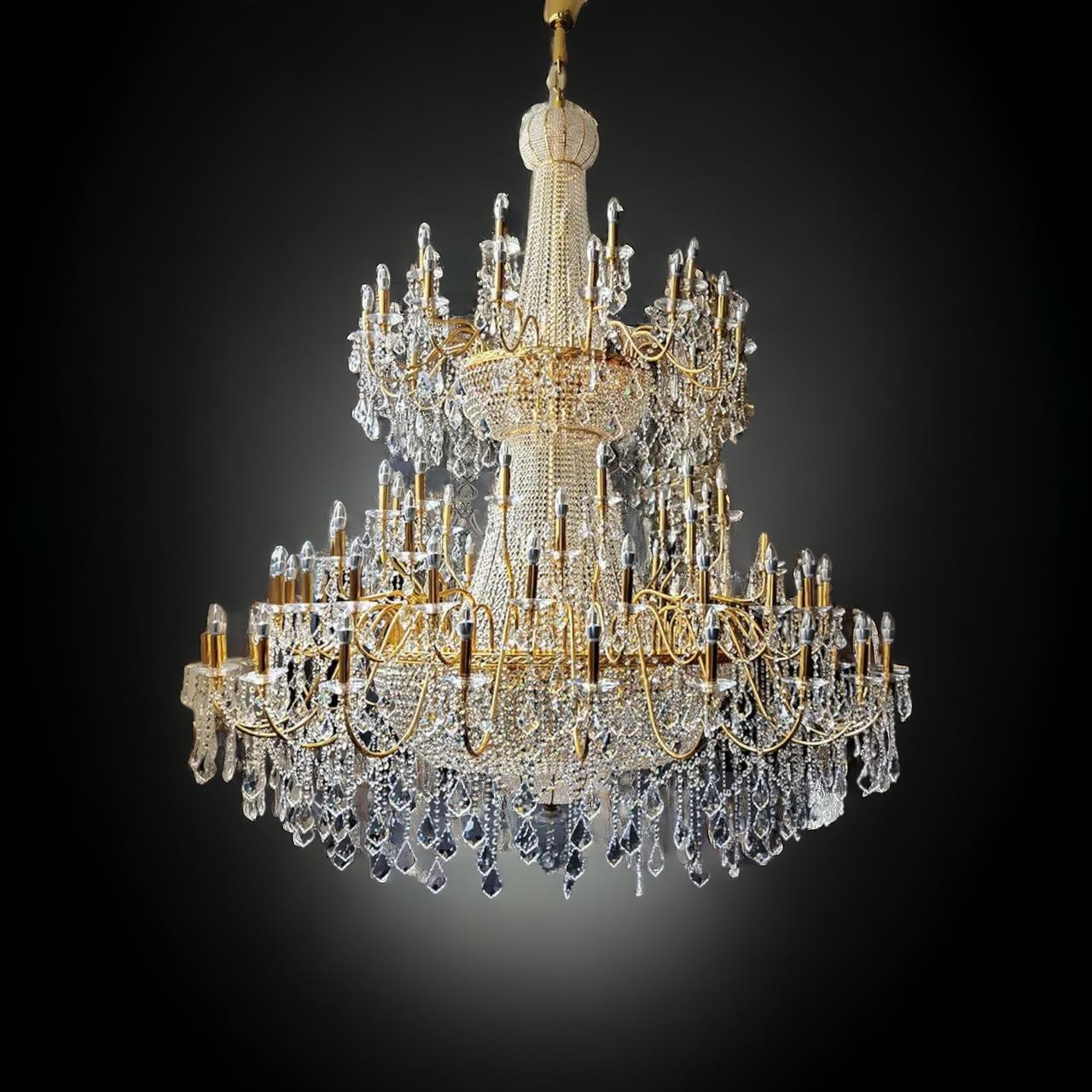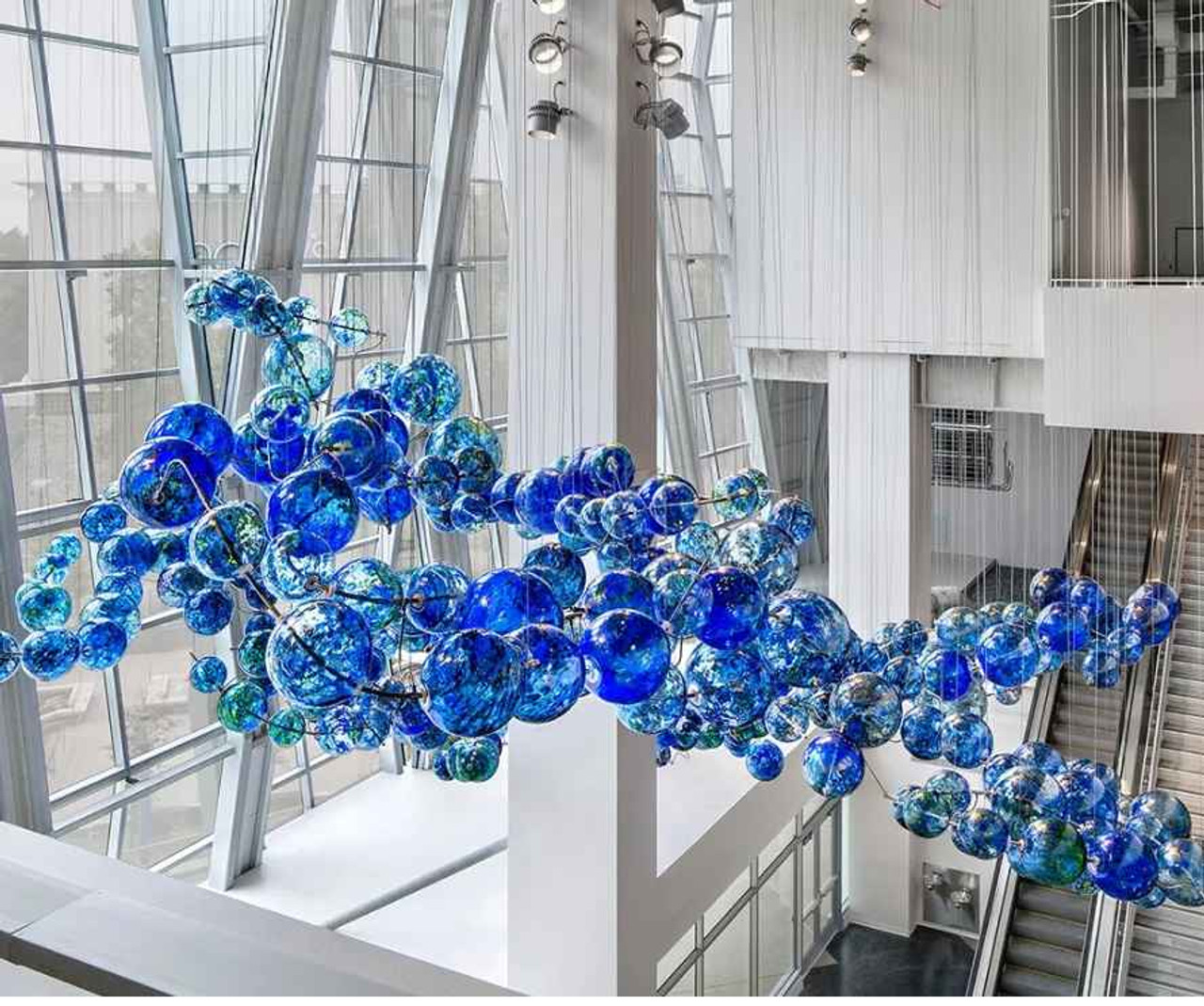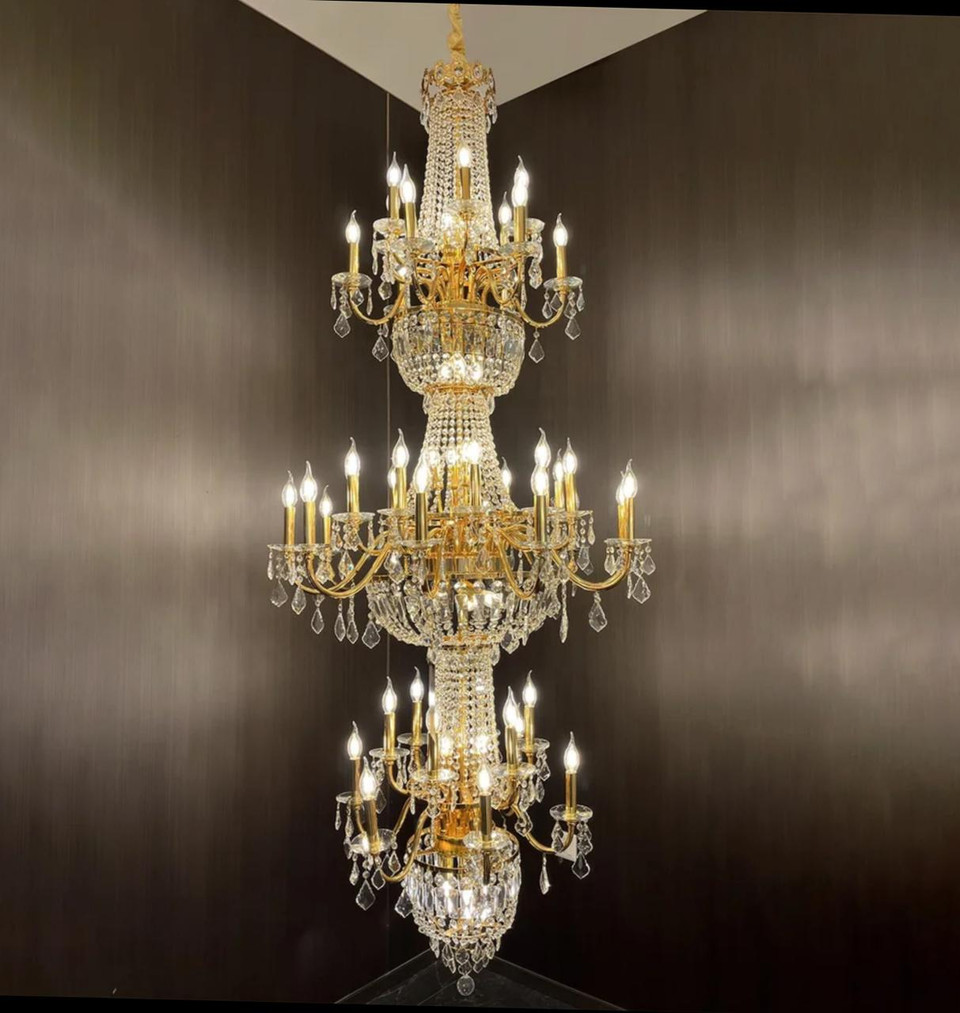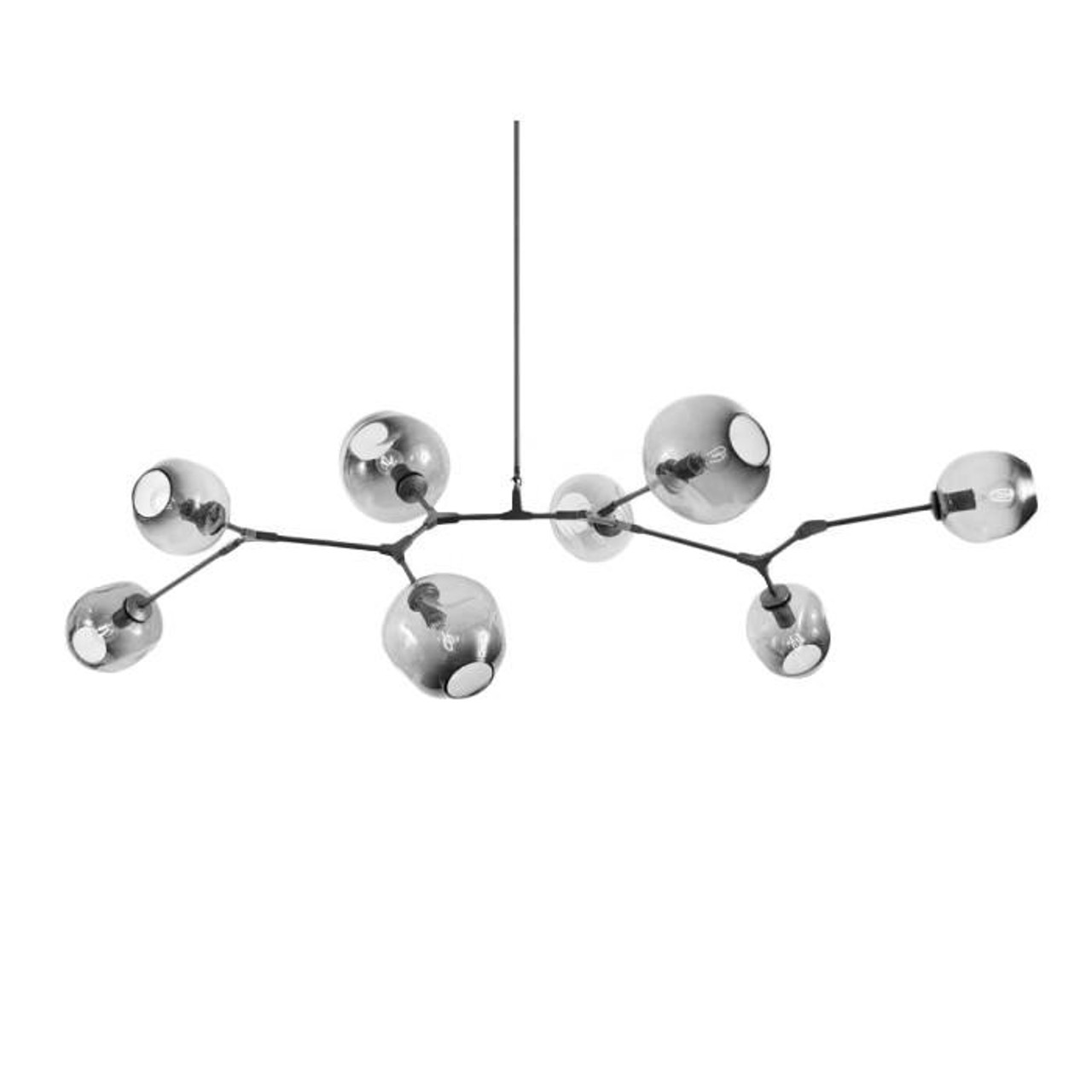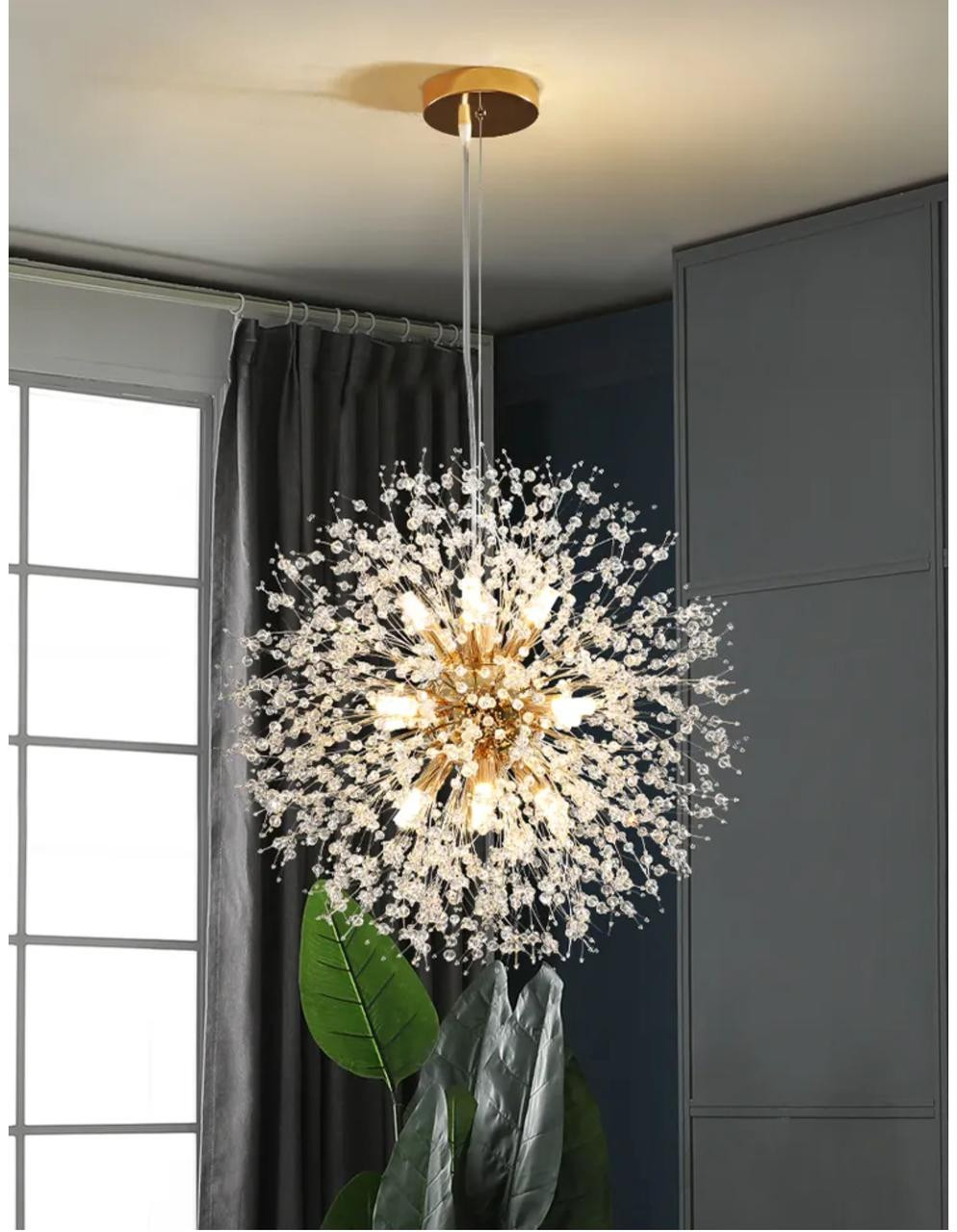Crystal Chandelier vs Glass Chandelier: Which One Is Right for You?
1st Sep 2024
Chandeliers have long been a symbol of elegance and luxury, gracing the ceilings of grand palaces, mansions, and prestigious buildings. They have the ability to transform any space, adding a touch of sophistication and class. However, when it comes to choosing a chandelier for your home or venue, one of the key decisions you'll need to make is whether to opt for a crystal chandelier or a glass chandelier. While both types offer unique aesthetic qualities, they differ in terms of material, design, light refraction, and overall ambiance. In this blog post, we’ll explore the differences between crystal chandeliers and glass chandeliers, helping you determine which one best suits your needs and preferences.
The Allure of Chandeliers: A Brief History
Before diving into the specifics of crystal and glass chandeliers, it's important to understand the rich history behind these stunning light fixtures. Chandeliers have been used for centuries, originally designed as simple wooden or iron frames with spikes to hold candles. Over time, these fixtures evolved to become more elaborate, incorporating intricate designs and materials like glass and crystal.
The earliest chandeliers date back to the medieval period, where they were primarily used in churches and homes of the wealthy. By the 17th century, chandeliers became even more ornate, often featuring multiple tiers and elaborate carvings. The introduction of glass and crystal in chandelier design revolutionized the industry, allowing for the creation of dazzling, light-reflecting pieces that became the epitome of opulence during the Baroque and Rococo periods.
Today, chandeliers continue to be a popular choice for lighting, adding a touch of elegance to a variety of spaces, from dining rooms and entryways to ballrooms and theaters. Whether you choose a crystal or glass chandelier, these fixtures are sure to make a statement in any setting.
Crystal Chandeliers: The Epitome of Luxury
When one thinks of chandeliers, crystal chandeliers often come to mind. Known for their dazzling sparkle and intricate designs, crystal chandeliers are synonymous with luxury and grandeur. But what exactly sets crystal chandeliers apart from their glass counterparts?
Material and Composition
Crystal chandeliers are made from high-quality leaded glass, often referred to as "crystal glass." The key ingredient that distinguishes crystal from standard glass is lead oxide, which is added to the glass mixture during production. The higher the lead content, the more brilliant and refractive the crystal becomes. High-end crystal chandeliers typically contain at least 24% lead oxide, which gives them their characteristic sparkle.
The crystal used in chandeliers can come in various forms, including Swarovski crystals, which are renowned for their precision-cut facets and exceptional clarity. Other popular types include Baccarat crystal and Waterford crystal, each offering its own unique qualities and heritage.
Design and Craftsmanship
Crystal chandeliers are often associated with elaborate designs and meticulous craftsmanship. The crystals are carefully cut into various shapes and sizes, such as prisms, pendants, octagons, and spears. These pieces are then arranged in intricate patterns that catch and refract light, creating a dazzling display of colors and reflections.
The design of crystal chandeliers can range from classic and traditional to modern and minimalist. Traditional crystal chandeliers often feature multiple tiers, ornate metalwork, and cascading crystal droplets, evoking a sense of grandeur and opulence. Modern crystal chandeliers, on the other hand, may incorporate sleek lines, geometric shapes, and a more understated use of crystal, offering a contemporary twist on a classic design.
Light Refraction and Ambiance
One of the defining characteristics of crystal chandeliers is their ability to refract light. When light passes through the faceted crystals, it is split into a spectrum of colors, creating a rainbow-like effect known as dispersion. This effect enhances the overall brightness of the room and adds a touch of magic to the ambiance.
Crystal chandeliers are often used in spaces where a dramatic, eye-catching focal point is desired. They are particularly popular in dining rooms, grand entryways, and formal living spaces, where their sparkling presence can be fully appreciated. However, they can also be used in smaller spaces to add a touch of luxury and sophistication.
Glass Chandeliers: Versatile and Timeless
While crystal chandeliers are often associated with luxury, glass chandeliers offer their own set of unique qualities that make them a popular choice for a wide range of interiors. Glass chandeliers are more versatile in design and can be tailored to suit both traditional and contemporary spaces.
Material and Composition
Glass chandeliers are made from standard glass, which is composed of silica (sand), soda, and lime. Unlike crystal, glass does not contain lead oxide, which means it is less refractive and does not produce the same level of sparkle as crystal. However, glass can be crafted in a variety of colors, textures, and finishes, allowing for greater flexibility in design.
Some glass chandeliers feature hand-blown glass, where each piece is individually crafted by skilled artisans. This technique allows for the creation of unique shapes and patterns, giving the chandelier a one-of-a-kind appearance. Murano glass, a famous type of hand-blown glass from the Venetian island of Murano, is often used in high-end glass chandeliers and is prized for its vibrant colors and intricate designs.
Design and Craftsmanship
Glass chandeliers are available in a wide range of designs, from classic to contemporary. Traditional glass chandeliers often feature clear or frosted glass, with ornate metalwork and intricate details that harken back to historical designs. These chandeliers are perfect for adding a timeless elegance to formal spaces such as dining rooms, libraries, or ballrooms.
In contrast, modern glass chandeliers often feature sleek, minimalist designs with clean lines and geometric shapes. They may incorporate colored or textured glass, as well as unconventional materials like metal, wood, or acrylic. These chandeliers are ideal for contemporary interiors, where they can serve as a statement piece that complements the overall design scheme.
Light Dispersion and Ambiance
While glass chandeliers do not have the same level of light refraction as crystal chandeliers, they still provide a beautiful, ambient light that enhances the atmosphere of a room. The clarity and transparency of the glass allow light to pass through, creating a warm, inviting glow.
Some glass chandeliers feature etched or frosted glass, which diffuses the light and reduces glare, resulting in a softer, more subdued illumination. This makes them a great choice for spaces where a more relaxed, cozy ambiance is desired, such as bedrooms, living rooms, or casual dining areas.
Glass chandeliers are also more versatile in terms of color and style, allowing them to seamlessly blend into a variety of interiors. Whether you prefer a classic, elegant look or a bold, modern design, there is a glass chandelier to suit your taste.
Crystal vs. Glass Chandeliers: Key Considerations
When choosing between a crystal chandelier and a glass chandelier, there are several factors to consider, including your personal style, the overall design of your space, and your budget. Here are some key points to keep in mind:
1. Aesthetic Appeal
If you are looking for a chandelier that exudes luxury and opulence, a crystal chandelier is the way to go. The sparkle and brilliance of crystal make it a show-stopping centerpiece that adds a touch of glamour to any room. Crystal chandeliers are particularly well-suited for formal spaces and grand settings where their dazzling presence can be fully appreciated.
On the other hand, if you prefer a more versatile and understated look, a glass chandelier may be a better option. Glass chandeliers offer a wide range of styles, from traditional to contemporary, and can be tailored to suit a variety of interiors. They provide a timeless elegance without overwhelming the space.
2. Light Refraction and Brightness
Crystal chandeliers are renowned for their ability to refract light, creating a brilliant, sparkling effect that enhances the brightness of the room. If you want a chandelier that not only illuminates the space but also creates a dazzling light display, a crystal chandelier is the ideal choice.
Glass chandeliers, while not as refractive as crystal, still provide a beautiful, ambient light that creates a warm and inviting atmosphere. If you prefer a softer, more subdued illumination, a glass chandelier may be more suitable.
3. Budget
Budget is another important consideration when choosing a chandelier. Crystal chandeliers, particularly those made from high-quality leaded crystal, tend to be more expensive than glass chandeliers. The cost of a crystal chandelier can vary widely depending on the type of crystal used, the size of the chandelier, and the intricacy of the design.
Glass chandeliers are generally more affordable, making them a great option for those who want the elegance of a chandelier without breaking the bank. The price of a glass chandelier will depend on factors such as the type of glass used, the craftsmanship, and the design.
4. Maintenance
Crystal chandeliers require regular cleaning to maintain their sparkle and brilliance. Dust and dirt can accumulate on the crystals, dulling their shine over time. Cleaning a crystal chandelier can be a time-consuming process, as each crystal piece must be carefully wiped down to avoid damage.
Glass chandeliers are generally easier to maintain, as they do not have the same level of light-reflecting surfaces as crystal chandeliers. A simple dusting and occasional cleaning of the glass pieces will keep a glass chandelier looking its best.
Conclusion: Which Chandelier Is Right for You?
Ultimately, the decision between a crystal chandelier and a glass chandelier comes down to your personal style, the ambiance you want to create, and your budget. If you’re looking for a statement piece that exudes luxury and creates a dazzling light display, a crystal chandelier is the perfect choice. Its timeless elegance and captivating sparkle will make it the focal point of any room.
On the other hand, if you prefer a more versatile and understated look, a glass chandelier offers a wide range of styles to suit any interior. Whether you opt for a classic design or a modern piece, a glass chandelier will add a touch of sophistication and warmth to your space.
Both crystal and glass chandeliers have their own unique qualities and appeal, and either choice will bring a touch of elegance and beauty to your home. By considering the factors outlined in this blog post, you can make an informed decision and choose the chandelier that best complements your space and reflects your personal style.


